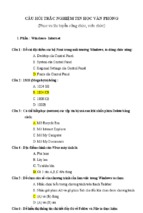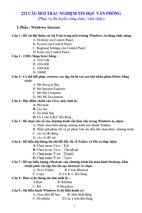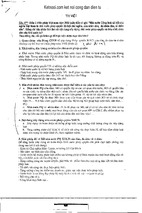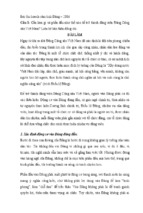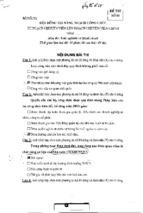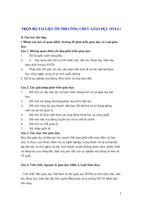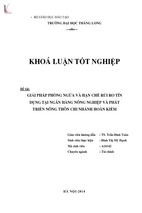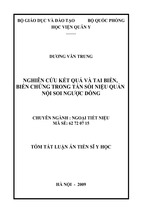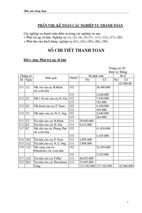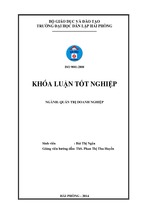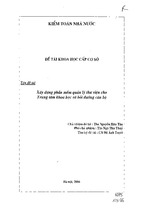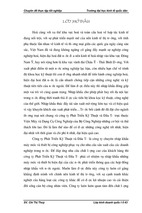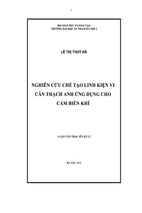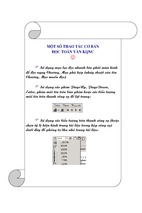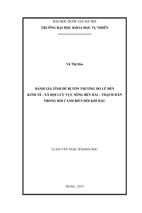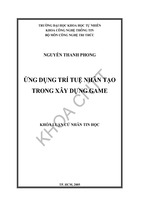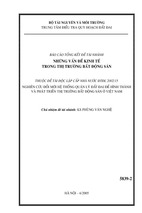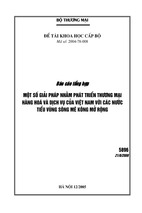®
MCAT Physics and Math Review
Edited by Alexander Stone Macnow, MD
Table of Contents
1. MCAT® Physics and Math Review
1. Cover
1. Title Page
2. Table of Contents
3. The Kaplan MCAT Review Team
4. About Scientific American
5. About the MCAT
6. How This Book Was Created
7. Using This Book
2. Chapter 1: Kinematics and Dynamics
1. Kinematics and Dynamics
2. Introduction
3. 1.1 Units
4. 1.2 Vectors and Scalars
5. 1.3 Displacement and Velocity
6. 1.4 Forces and Acceleration
7. 1.5 Newton’s Laws
8. 1.6 Motion with Constant Acceleration
9. 1.7 Mechanical Equilibrium
10. Conclusion
11. Concept Summary
12. Answers to Concept Checks
13. Equations to Remember
14. Shared Concepts
15. Practice Questions
16. Answers and Explanations
3. Chapter 2: Work and Energy
1. Work and Energy
2. Introduction
3. 2.1 Energy
4. 2.2 Work
5. 2.3 Mechanical Advantage
6. Conclusion
7. Concept Summary
8. Answers to Concept Checks
9. Equations to Remember
10. Shared Concepts
11. Practice Questions
12. Answers and Explanations
4. Chapter 3: Thermodynamics
1. Thermodynamics
2. Introduction
3. 3.1 Zeroth Law of Thermodynamics
4. 3.2 Systems
5. 3.3 First Law of Thermodynamics
6. 3.4 Second Law of Thermodynamics and Entropy
7. Conclusion
8. Concept Summary
9. Answers to Concept Checks
10. Equations to Remember
11. Shared Concepts
12. Practice Questions
13. Answers and Explanations
5. Chapter 4: Fluids
1. Fluids
2. Introduction
3. 4.1 Characteristics of Fluids and Solids
4. 4.2 Hydrostatics
5. 4.3 Fluid Dynamics
6. 4.4 Fluids in Physiology
7. Conclusion
8. Concept Summary
9. Answers to Concept Checks
10. Equations to Remember
11. Shared Concepts
12. Practice Questions
13. Answers and Explanations
6. Chapter 5: Electrostatics and Magnetism
1. Electrostatics and Magnetism
2. Introduction
3. 5.1 Charges
4. 5.2 Coulomb’s Law
5. 5.3 Electrical Potential Energy
6. 5.4 Electrical Potential
7. 5.5 Special Cases in Electrostatics
8. 5.6 Magnetism
9. Conclusion
10. Concept Summary
11. Answers to Concept Checks
12. Equations to Remember
13. Shared Concepts
14. Practice Questions
15. Answers and Explanations
7. Chapter 6: Circuits
1. Circuits
2. Introduction
3. 6.1 Current
4. 6.2 Resistance
5. 6.3 Capacitance and Capacitors
6. 6.4 Meters
7. Conclusion
8. Concept Summary
9. Answers to Concept Checks
10. Equations to Remember
11. Shared Concepts
12. Practice Questions
13. Answers and Explanations
8. Chapter 7: Waves and Sound
1. Waves and Sound
2. Introduction
3. 7.1 General Wave Characteristics
4. 7.2 Sound
5. Conclusion
6. Concept Summary
7. Answers to Concept Checks
8. Equations to Remember
9. Shared Concepts
10. Practice Questions
11. Answers and Explanations
9. Chapter 8: Light and Optics
1. Light and Optics
2. Introduction
3. 8.1 Electromagnetic Spectrum
4. 8.2 Geometrical Optics
5. 8.3 Diffraction
6. 8.4 Polarization
7. Conclusion
8. Concept Summary
9. Answers to Concept Checks
10. Equations to Remember
11. Shared Concepts
12. Practice Questions
13. Answers and Explanations
10. Chapter 9: Atomic and Nuclear Phenomena
1. Atomic and Nuclear Phenomena
2. Introduction
3. 9.1 The Photoelectric Effect
4. 9.2 Absorption and Emission of Light
5. 9.3 Nuclear Binding Energy and Mass Defect
6. 9.4 Nuclear Reactions
7. Conclusion
8. Concept Summary
9. Answers to Concept Checks
10. Equations to Remember
11. Shared Concepts
12. Practice Questions
13. Answers and Explanations
11. Chapter 10: Mathematics
1. Mathematics
2. Introduction
3. 10.1 Arithmetic and Significant Figures
4. 10.2 Exponents and Logarithms
5. 10.3 Trigonometry
6. 10.4 Problem-Solving
7. Conclusion
8. Concept Summary
9. Answers to Concept Checks
10. Equations to Remember
11. Shared Concepts
12. Practice Questions
13. Answers and Explanations
12. Chapter 11: Reasoning About the Design and Execution of
Research
1. Reasoning About the Design and Execution of Research
2. Introduction
3. 11.1 The Scientific Method
4. 11.2 Basic Science Research
5. 11.3 Human Subjects Research
6. 11.4 Ethics
7. 11.5 Research in the Real World
8. Conclusion
9. Concept Summary
10. Answers to Concept Checks
11. Shared Concepts
12. Practice Questions
13. Answers and Explanations
13. Chapter 12: Data-Based and Statistical Reasoning
1. Data-Based and Statistical Reasoning
2. Introduction
3. 12.1 Measures of Central Tendency
4. 12.2 Distributions
5. 12.3 Measures of Distribution
6. 12.4 Probability
7. 12.5 Statistical Testing
8. 12.6 Charts, Graphs, and Tables
9. 12.7 Applying Data
10. Conclusion
11. Concept Summary
12. Answers to Concept Checks
13. Equations to Remember
14. Shared Concepts
15. Practice Questions
16. Answers and Explanations
14. About This Book
1. Copyright Information
2. Glossary
3. Index
4. Art Credits
5. Periodic Table of the Elements
6. Special Offer for Kaplan Students
The Kaplan MCAT Review Team
Alexander Stone Macnow, MD
Editor-in-Chief
Alisha Maureen Crowley
Kaplan MCAT Faculty
MCAT faculty reviewers Elmar R. Aliyev; James Burns; Jonathan
Cornfield; Nikolai Dorofeev, MD; Benjamin Downer, MS; Colin Doyle;
M. Dominic Eggert; Marilyn Engle; Eleni M. Eren; Raef Ali Fadel; Tyra
Hall-Pogar, PhD; Scott Huff; Samer T. Ismail; Elizabeth A. Kudlaty; Kelly
Kyker-Snowman, MS; Ningfei Li; John P. Mahon; Matthew A. Meier;
Nainika Nanda; Caroline Nkemdilim Opene; Kaitlyn E. Prenger; Uneeb
Qureshi; Derek Rusnak, MA; Kristen L. Russell, ME; Bela G. Starkman,
PhD; Michael Paul Tomani, MS; Nicholas M. White; Kerranna
Williamson, MBA; Allison Ann Wilkes, MS; and Tony Yu
Thanks to Kim Bowers; Tim Eich; Samantha Fallon; Owen Farcy; Dan
Frey; Robin Garmise; Rita Garthaffner; Joanna Graham; Adam Grey;
Allison Harm; Beth Hoffberg; Aaron Lemon-Strauss; Keith Lubeley;
Diane McGarvey; Petros Minasi; John Polstein; Deeangelee PooranKublall, MD, MPH; Rochelle Rothstein, MD; Larry Rudman; Sylvia
Tidwell Scheuring; Carly Schnur; Karin Tucker; Lee Weiss; and the
countless others who made this project possible.
About Scientific American
Scientific American is at the heart of Nature Publishing Group’s consumer
media division, meeting the needs of the general public. Founded in 1845,
Scientific American is the longest continuously published magazine in the
United States and the leading authoritative publication for science in the
general media. In its history, 148 Nobel Prize scientists have contributed
240 articles to Scientific American, including Albert Einstein, Francis
Crick, Stanley Prusiner, and Richard Axel.
Together with scientificamerican.com and in translation in 14 languages
around the world, it reaches more than 5 million consumers and scientists.
Other titles include Scientific American Mind and Spektrum der
Wissenschaft in Germany. Scientific American won a 2011 National
Magazine Award for General Excellence.
About the MCAT
The structure of the four sections of the MCAT is shown below.
Chemical and Physical Foundations of Biological Systems
Time
Format
95 minutes
59 questions
10 passages
44 questions are passage-based, and 15 are discrete (stand-alone)
questions.
Score between 118 and 132
What It
Biochemistry: 25%
Tests
Biology: 5%
General Chemistry: 30%
Organic Chemistry: 15%
Physics: 25%
Critical Analysis and Reasoning Skills (CARS)
Time
Format
90 minutes
53 questions
9 passages
All questions are passage-based. There are no discrete (stand-alone)
questions.
Score between 118 and 132
What It
Disciplines:
Humanities: 50%
Tests
Social Sciences: 50%
Skills:
Foundations of Comprehension: 30%
Reasoning Within the Text: 30%
Reasoning Beyond the Text: 40%
Biological and Biochemical Foundations of Living Systems
Time
Format
95 minutes
59 questions
10 passages
44 questions are passage-based, and 15 are discrete (stand-alone)
questions.
Score between 118 and 132
What It
Biochemistry: 25%
Tests
Biology: 65%
General Chemistry: 5%
Organic Chemistry: 5%
Psychological, Social, and Biological Foundations of Behavior
Time
Format
95 minutes
59 questions
10 passages
44 questions are passage-based, and 15 are discrete (stand-alone)
questions.
Score between 118 and 132
What It
Biology: 5%
Tests
Psychology: 65%
Sociology: 30%
Total
Testing
375 minutes (6 hours, 15 minutes)
Time
Questions
230
Score
472 to 528
The MCAT also tests four Scientific Inquiry and Reasoning Skills (SIRS):
1. Knowledge of Scientific Concepts and Principles (35% of
questions)
2. Scientific Reasoning and Problem-Solving (45% of questions)
3. Reasoning About the Design and Execution of Research (10% of
questions)
4. Data-Based and Statistical Reasoning (10% of questions)
The MCAT is a computer-based test (CBT) and is offered at Prometric
centers during almost every month of the year. There are optional breaks
between each section, and there is a lunch break between the second and
third section of the exam.
Register online for the MCAT at www.aamc.org/mcat
.
For further questions, contact the MCAT team at the Association of
American Medical Colleges:
MCAT Resource Center
Association of American Medical Colleges
(202) 828-0690
www.aamc.org/mcat
[email protected]
How This Book Was Created
The Kaplan MCAT Review project began in November 2012 shortly after
the release of the Preview Guide for the MCAT 2015 Exam, 2nd edition.
Through thorough analysis by our staff psychometricians, we were able to
analyze the relative yield of the different topics on the MCAT, and we
began constructing tables of contents for the books of the Kaplan MCAT
Review series.
Writing of the books began in April 2013. A dedicated staff of 19 writers,
7 editors, and 32 proofreaders worked over 5000 combined hours to
produce these books. The format of the books was heavily influenced by
weekly meetings with Kaplan’s learning-science team.
These books were submitted for publication in July 2014. For any
updates after this date, please visit www.kaplanmcat.com .
The information presented in these books covers everything listed on the
official MCAT content lists—nothing more, nothing less. Every topic in
these lists is covered in the same level of detail as is common to the
undergraduate and postbaccalaureate classes that are considered
prerequisites for the MCAT. Note that your premedical classes may cover
topics not discussed in these books, or they may go into more depth than
these books do. Additional exposure to science content is never a bad
thing, but recognize that all of the content knowledge you are expected to
have walking in on Test Day is covered in these books.
If you have any questions about the content presented here, email
[email protected] . For other questions not related to
content, email
[email protected] .
Each book has been vetted through at least six rounds of review. To that
end, the information presented is these books is true and accurate to the
best of our knowledge. Still, your feedback helps us improve our prep
materials. Please notify us of any inaccuracies or errors in the books by
sending an email to
[email protected] .
Using This Book
Kaplan MCAT Physics and Math Review, along with the other six books in
the Kaplan MCAT Review series, brings the Kaplan classroom experience
to you—right in your home, at your convenience. This book offers the
same Kaplan content review, strategies, and practice that make Kaplan the
#1 choice for MCAT prep. After all, twice as many doctors prepared with
Kaplan for the MCAT than with any other course.
This book is designed to help you review the physics and math topics
covered on the MCAT. Please understand that content review—no matter
how thorough—is not sufficient preparation for the MCAT! The MCAT
tests not only your science knowledge but also your critical reading,
reasoning, and problem-solving skills. Do not assume that simply
memorizing the contents of this book will earn you high scores on Test
Day; to maximize your scores, you must also improve your reading and
test-taking skills through MCAT-style questions and practice tests.
MCAT CONCEPT CHECKS
At the end of each section, you’ll find a few open-ended questions that you
can use to assess your mastery of the material. These MCAT Concept
Checks were introduced after multiple conversations with Kaplan’s
learning-science team. Research has demonstrated repeatedly that
introspection and self-analysis improve mastery, retention, and recall of
material. Complete these MCAT Concept Checks to ensure that you’ve got
the key points from each section before moving on!
PRACTICE QUESTIONS
At the end of each chapter, you’ll find 15 MCAT-style practice questions.
These are designed to help you assess your understanding of the chapter
you just read. Most of these questions focus on the first of the Scientific
Inquiry and Reasoning Skills (Knowledge of Scientific Concepts and
Principles), although there are occasional questions that fall into the
second or fourth SIRS (Scientific Reasoning and Problem-Solving, and
Data-Based and Statistical Reasoning, respectively). This book also
contains a full chapter each for two of the SIRS: Chapter 11 (Reasoning
about the Design and Execution of Research) and Chapter 12 (Data-Based
and Statistical Reasoning).

